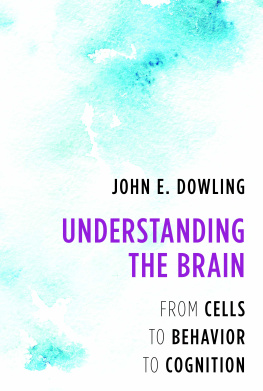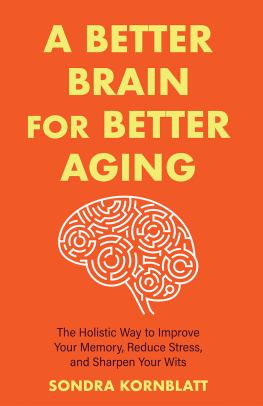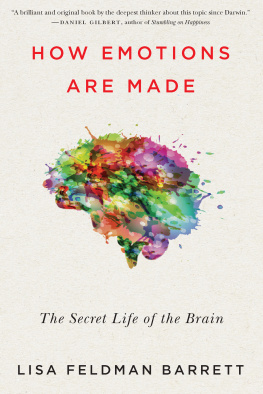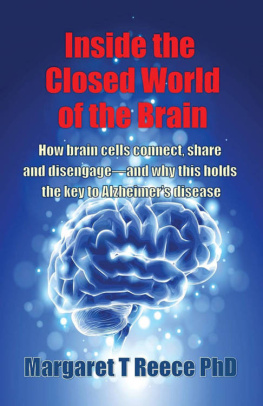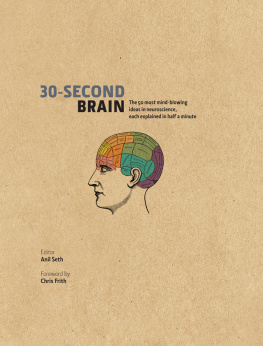
Understanding the Brain

For Alexander John, who has brought so much joy to our lives, and his yet-to-be-born brother
W hat makes us human and unique among all creatures is our brain. Perception, consciousness, memory, learning, language, and intelligence all originate in and depend on the brain. The brain provides us with wondrous things, from mathematical theories to symphonies, from automobiles and airplanes to trips to the moon. But when it goes awry, we are undone.
Over the past century, our understanding of the brain has raced forward, yet those who study the brain are still scratching the surface, so to speak. What is the mind, after all, and how does it relate to brain function? Most neuroscientists believe the mind originates in brain function, but at the moment no one can define adequately what we mean by mind. Consciousness is a particularly elusive subject, though philosophers and others endlessly talk about what it means.
As a neurobiologist, I am forever peppered with questions about the brain and brain function. This is especially true for friends who know about the exciting discoveries in the brain sciences yet witness the consequences of mental illness, aging, or brain injury and want to know more about new drug therapies for treating these problems. No field of medicine is untouched by the advances in the brain sciences, especially as we have come to realize how much the course of a disease and even its outcome, perhaps, can be affected by brain function and mental state. Sound body/sound mind is a two-way street; each is profoundly affected by the other.
This book is intended to answer many of the questions about neuroscience I am often asked. At the same time, I hope to convey to the general reader the essence and vitality of the fieldthe progress we are making in understanding how brains workand to describe some of our strategies for studying brain function. Whenever possible, I try to relate topics to something relevant, such as a disease or a consequence of brain function. Much wonderful work in the field is ignoredto keep the book manageable and, I hope, an interesting read.
The first four chapters provide the nuts and bolts necessary for an up-to-date understanding of the brain. The remainder of the book dips into aspects of brain functionvision, perception, language, memory, emotion, and consciousnessseemingly more relevant to cognition and how the brain creates mind. But if an in-depth understanding of these topics is to be gained, the nuts and bolts of brain function must first be sorted out.
An earlier version of this book was published 20 years ago and was called Creating Mind. Where are we today in understanding brain function? Clearly we have learned much in two areas especiallyfirst in neurobiology, the biological mechanisms underlying neuronal function. We can now describe how neurons work in exquisite detailhow they are stimulated, how they generate and propagate electrical signals along their membranes, how they transmit information at synapses, and how they may be modulated or modified on short- or long-term bases. In addition, a wealth of information has been uncovered about the glial cells in the brainthe cells that provide a supporting role to the neurons, in maintaining extracellular space, guiding developing neurons to their proper places in the brain, and pruning and modifying synapses in both the developing and adult brain.
On the other side of the coin, cognitive science has told us much about the human brain and mind and where in the brain behavioral and cognitive phenomena happen. Imaging of the brain, especially functional imaging, has become more and more sophisticated and revealing. Brain imaging has revolutionized psychology: no longer is the brain thought of as a black box.
So where do we need to go? In my view it is to integrate neurobiology and cognitive science. How do groups of neurons interact to underlie complex behaviors? This is the province of systems neuroscience. We are just at the beginning of this quest, which must happen if we are truly going to understand the brain. In my view, it is the major challenge for neuroscience in the twenty-first century. This will be important for understanding not only the normal brain but also the diseased, damaged, or cognitively compromised brain.
Invertebrates have provided some nice examples of understanding simple behaviors neurobiologically (see ) but for complete behaviors in vertebrates we have far to go. How will this happen? New electron microscope techniques for imaging and reconstructing brain areas down to the single synapse level, recording the activity of hundreds of neurons simultaneously, and computational modeling are all being worked on intensively and are promising in this regard. In this book, I focus on what we do know presently about how the brain functions. As a neurobiologist, I try to emphasis whenever possible underlying biological mechanisms for the phenomenon under discussion, in an attempt wherever possible to bridge the gap between neurobiology and cognition.
discusses the various sensory receptor systems we have that enable us to experience the world.
, along with brain imaging and the question of how we discover new things about the human brain. The neurology clinic has long provided instructive examples of patients with specific brain lesions. Today, brain imaging techniques promise a wealth of new information about the human brain.
discusses consciousness. What do we mean by consciousness, and what can we say about consciousness from a neuroscience perspective? Throughout the book, I start most chapters with an example where brain function is compromised by injury or disease. Such examples are not presented simply as curiosities. Rather, these alterations in brain function cast light on normalcy. Finally, a glossary is provided to help with unfamiliar terms or concepts, but in almost every case further explanation is provided elsewhere in the book.
The earlier version of this book was written primarily for the non-scientist and it did well, having been reprinted seven times. I have used it for many years as the basic book for my freshman seminar at Harvard. These first-year students, interested in science, but not planning to major in a science, always found it accessible. After 20 years, however, the book clearly needed some updating, so I approached W. W. Norton & Company, its publisher, about doing this. I received an enthusiastic response from Deborah Malmud, a Vice President at Norton, who told me she always enjoyed the book and that it was one of the first books on her shelf when she began working in professional book publishing. She suggested that I not simply update the book, but expand it, essentially making it a new book with a significant amount of new material and with another title. This I have tried to do, describing not only what we presently know about brain function, but where we need to gothe future of brain research.
I owe many thanks to Deborah for her help throughout the writing, from her initial suggestions, to reading partial drafts and eventually the final draft. She has been most supportive. Thanks also to her assistant, Kate Prince, and project editor Mariah Eppes for their patience and enormous help. And finally, many, many thanks to Giselle Grenier, my assistant, who patiently and expertly entered the many drafts of the manuscript into the computer and also carried out all the other things such a project entails.
Cellular Neurobiology
THE NUTS AND BOLTS
Next page
